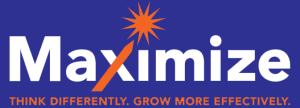What will get—and keep—your customers’ attention?
Too many organizations design products, services and programs that are technology-driven or directed by internal their own internal objectives. If you don’t have what your customers are looking for and don’t present it to them in ways and words that make sense to them, they will neither believe it nor buy it. Understanding your customers’ needs and designing solutions that squarely meet them will set you apart.
Who are your customers?
- If you are a government agency, your customer might be citizens or a subset of the general population.
- If you are a nonprofit, your customer might be specific individuals or groups.
- If you are a corporation, your customers might be shareholders, other companies or consumers.
Tapping into myriad tools and techniques, from the fields of design thinking, market research and user experience, we will help you to clearly define your target audience and uncover what drives their behaviors so that you can develop solutions that are aligned with your mission and that meet their evolving needs, now and into the future.
Maximize can help your business to harness the power of your customers.
We infuse traditional business approaches with collaborative principles to make your organization relevant to your customers in three ways:
- Clearly define who your customers are so you that you know whom to target.
-
Uncover their articulated and unarticulated needs so that you can design services and solutions for them that will truly resonate.
- Understand how to most effectively communicate with them online and offline.
Maximize has developed and implemented successful customer engagement initiatives.
- Developed the strategic plan for the User Experience and Design branch of a federal government agency.
- Designed and executed a design thinking process for a nonprofit to uncover breakthrough approaches to delivering services to its youth and teen target audience.
- Expanded the awareness of a global health organization’s important initiatives into non-traditional communities, by strategically participating in conversations on social networks.

